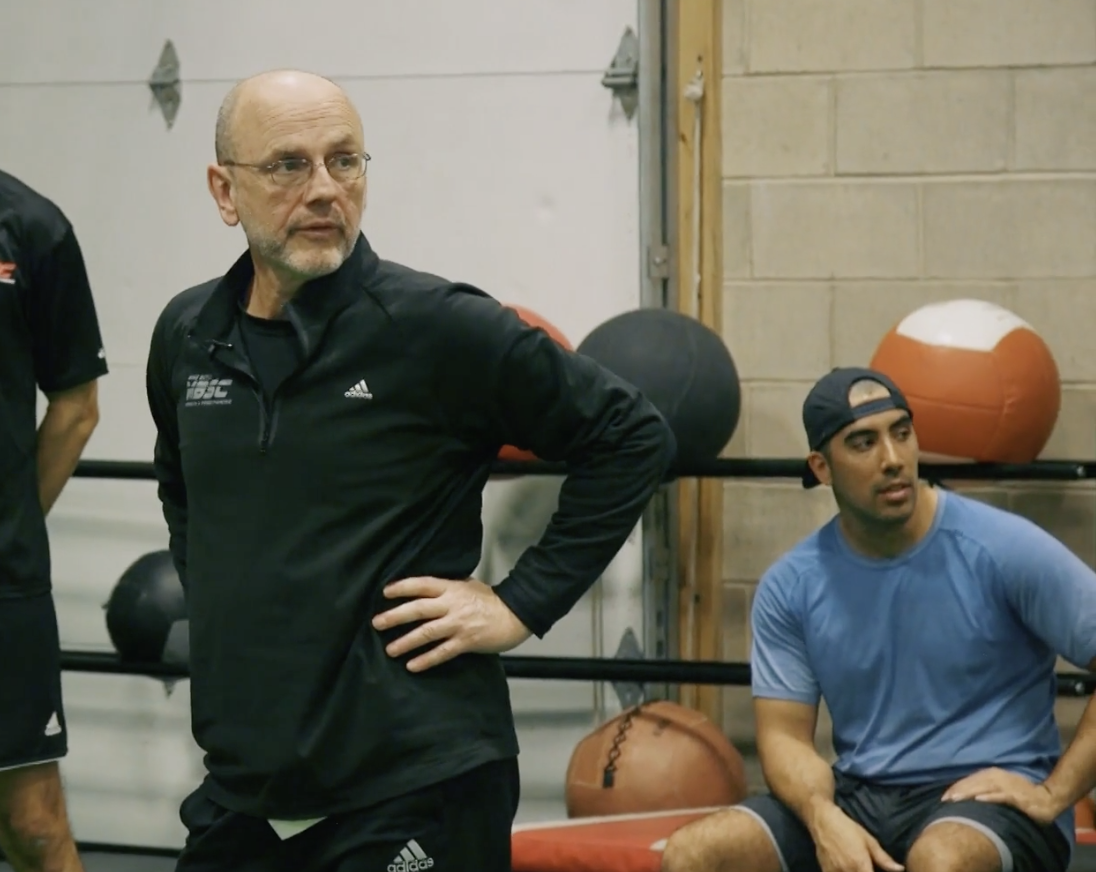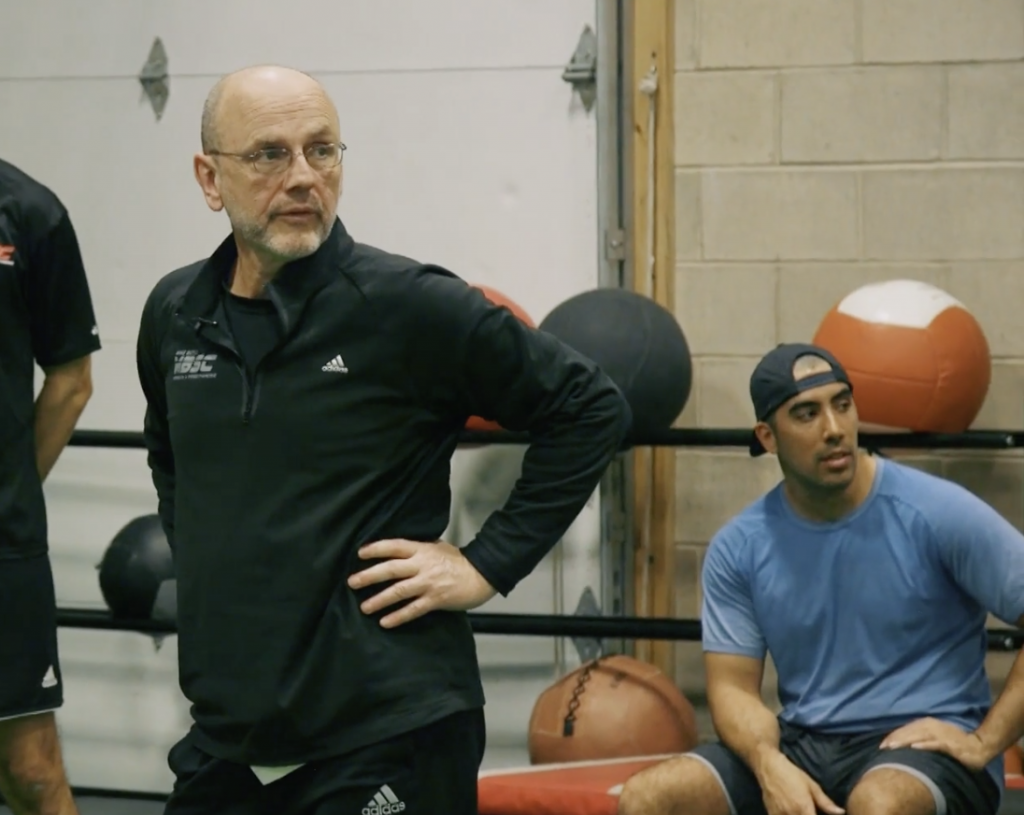By: Mike Boyle
I’ve been fortunate to have had the opportunity to be intimately involved in the rehabilitation of elite, fast-twitch athletes in four major sports: football, soccer, baseball, and ice hockey. Training fast-twitch athletes may require special attention in some areas.
I know, the first thing many of you might be thinking is “all professional team sport athletes are elite, fast-twitch, athletes”.
However, I’d disagree. The guy that I am specifically talking about is the sprinter; the fastest guy on your team. The guy that seems to be 99% fast-twitch muscle fiber. These guys are different. Special. Unique. These are the guys that make the big plays, score highlight film goals, and change the game just by being in it.
Physiologically, this guy is what we might call a track sprinter. He is often the center fielder in baseball, the striker in soccer, your best forward in hockey, and the wide receiver in football. Interestingly enough, these types of athletes also seem to be the most frequently injured. And, because they play important, highly visible positions, they get a lot of attention. The attention is positive when they are scoring the highlight film goals and negative when they are injured and unable to play. Unfortunately for them, their injuries make headlines. Writers discuss the type of injury, the amount of lost time, and most importantly, the potential ramifications of these injuries on the team.
In a sort of paradox, although these athletes are highly valued, they are also often highly criticized. When the elite, fast-twitch, athlete is injured, they are often perceived as soft by coaches, trainers and most importantly, sports writers. The frequent disputes about rehab, readiness and return to play make their way into the media and fans become emotionally involved.
Related: Creating Hunters – Coaching a Culture and Mindset
Two Theories about Training Fast-Twitch Athletes
I’d like to propose two theories about these elite, fast-twitch athletes that I have never read in the conventional literature.
1-The elite fast-twitch athlete may be “overpowered”. The powerful nervous system that makes them so fast and so explosive also gives them the capability to overwhelm their own muscles. These are guys with a nervous system capable of producing extremely powerful muscular contractions. Cumulative fatigue and dehydration can be deadly to these guys.
2-Perhaps the well-developed neurological system that makes these athletes exceptional at their sport also causes them to perceive much more pain and discomfort than the average player. Perhaps the exceptional neurological system that allows them to run and jump with ease also contains a curse. These gifted players, who are often perceived as soft, actually seem to have very well developed neural regulation that gauges their ability to compete. Often, they will simply say something like “no, I can’t do that yet”. When they do, pay attention. They will usually be right.
The average player may be able to play at less than top speed and is often credited with mental toughness for doing so. The elite fast-twitch athlete does not have this luxury. Playing a position that requires exceptional speed does not lend itself to being “close” to ready. The elite fast-twitch athlete does not have the luxury of operating at less than 100%. Their position demands top speed to be successful.
Differentiating Between Horse Power and Work Ethic
To further understand this elite fast-twitch athlete an analogy may be helpful. Coaches, trainers and sports writers need to understand that even in the world of elite sport there are still plow horses and race horses, sports cars and trucks. In the equestrian world trainers know that elite horses need to be treated differently than plow horses. You don’t see trainers enter plow horses in the Kentucky Derby but, we do praise the plow horse for its work ethic. However, in the sports world, we often seem to want a horse like American Pharoah to willingly accept being hooked to a plow.
In the world of racing it is well known that the most expensive cars are also the most difficult to maintain. Anyone can fix a normal car but, would you take your formula 1 car to an express lube?
Unfortunately, in the sports world our gifted athletes are often misunderstood and mis-characterized. Yes, we probably treat animals and vehicles better than some of these elite athletes. When they are unable to play, they are called soft. Their mental toughness is questioned. But, when they are healthy they are once again revered. Idolized. Praised.
Physiological and Psychological Factors
Author and track coach Carl Valle points out “Based on research on creatine kinase, we tend to see the more explosive type athletes as more susceptible to soreness. The divas (read: talented and slightly lazy) avoid training and have a legitimate point about the uniqueness of their responses to training.”
In other words, the explosive athlete tends to be more prone to be sore! Because they are more prone to be sore (potentially because they produce more powerful contractions than a “normal” athlete) these athletes will often be uncooperative in training and rehab, further reinforcing their reputation as “soft” or “difficult”.
Legendary speed coach Charlie Francis said, “High level sprinters tend to be short tempered, explosive, and intense. A sprinter will have all of these characteristics even at a young age. An explosive personality is an indication of an explosive nervous system’[1]”. This will make conflicts frequent, particularly when coaches or trainers are calling things like mental toughness into question.
Great coaches and smart athletic trainers need to understand the unique needs of these athletes as they are often the highest earning athlete and a potential all-star or MVP.
Guidelines for Rehabilitating and Training Fast-twitch Athletes
- Often these athletes aren’t soft, just receptive to pain and perceptive about what they need to do. They will know exactly what they feel and may say things like they feel “almost 100%”. Respect that and know that means they are not ready.
- Build trust. Most of these athletes have been questioned their entire career and may have a built-in distrust of athletic trainers and doctors. Talking to them instead of at them will change the dynamic.
- Progress slowly and intelligently. Again, this is not the usual plow horse. This is a finely tuned, super powered machine
- Program carefully. Any program change is likely to cause soreness. This will be magnified in the elite, fast-twitch athlete and will cause push back.
- Think about Androcles and the Lion. Androcles pulled the thorn from the lion’s paw and was saved from being eaten. The story is included below for you to read but, just remember that this guy can make or break a career.
Androcles and the Lion (an Aesop’s Fable)
It happened in the old days at Rome that a slave named Androcles escaped from his master and fled into the forest, and he wandered there for a long time until he was weary. Just then he heard a lion near him moaning and groaning and at times roaring terribly.
Tired as he was Androcles rose up and rushed away from the lion; but as he made his way through the bushes he stumbled over the root of a tree and fell down. When he tried to get up he saw the lion coming towards him, limping on three feet and holding his forepaw in front of him. Androcles was in despair; he had no strength to rise and run away, and there was the lion coming upon him.
But when the great beast came up to him instead of attacking him it kept on moaning and groaning and looking at Androcles, who saw that the lion was holding out his right paw, which was covered with blood and very swollen. Looking more closely at it, Androcles saw a great big thorn pressed into the paw, which was the cause of all the lion’s trouble. Plucking up courage he seized hold of the thorn and drew it out of the lion’s paw, who roared with pain when the thorn came out, but soon after found such relief from it that he fawned upon Androcles and showed, in every way that he knew, to whom he owed the relief. Instead of eating him he brought him a young deer that he had slain, and Androcles managed to make a meal from it.
For some time, the lion continued to bring the game he had killed to Androcles, who became quite fond of the huge beast. One day a number of soldiers came marching through the forest and found Androcles. They took him prisoner and brought him back to the town from which he had fled. Here his master soon found him and brought him before the authorities, and he was condemned to death. It used to be the custom to throw murderers and other criminals to the lions in a huge circus, so that while the criminals were punished the public could enjoy the spectacle of a combat between them and the wild beasts.
So, Androcles was condemned to be thrown to the lions, and on the appointed day he was led forth into the Arena and left there alone with only a spear to protect him from the lion. The Emperor was in the royal box that day and gave the signal for the lion to come out and attack Androcles.
But when it came out of its cage and got near Androcles, what do you think it did? Instead of jumping upon him it fawned upon him and stroked him with its paw and made no attempt to do him any harm. It was of course the lion which Androcles had met in the forest.
The Emperor, surprised at seeing such a strange behavior in so cruel a beast, summoned Androcles to him and asked him how it happened that this particular lion had lost all its cruelty of disposition. So Androcles told the Emperor all that had happened to him and how the lion was showing its gratitude for his having relieved it of the thorn.
Thereupon the Emperor pardoned Androcles and ordered his master to set him free, while the lion was taken back into the forest and let loose to enjoy liberty once more.
Truth is, the way to succeed in pro sports may be to find the thorn in the lion’s paw, not antagonize the lion.
A well-educated coach or trainer who understands rehab, corrective exercise, and most importantly people can remove the thorn and make a friend for life. I know, I’ve done it and reaped the benefits.
[1] Francis, Charlie. Charlie Francis Training System (Kindle Locations 706-707). Kindle Edition.
About the Author
 Michael Boyle is the Co-Founder of Mike Boyle Strength and Conditioning in Woburn, MA. He is known internationally for his pioneering work in the field of Strength & Conditioning and is regarded as one of the top experts in the area for Sports Performance Training.
Michael Boyle is the Co-Founder of Mike Boyle Strength and Conditioning in Woburn, MA. He is known internationally for his pioneering work in the field of Strength & Conditioning and is regarded as one of the top experts in the area for Sports Performance Training.
He has made his mark on the industry over the past 30 years with an impressive following of professional athletes, from the US Women’s Olympic teams in Soccer and Ice Hockey to the Boston Bruins, Boston Breakers, New England Revolution, and most recently the Boston Red Sox.
His client list over the years reads like a “Who’s Who” of athletic success in New England and across the country including legendary Boston names such as Nomar Garciaparra, Cam Neely, and Ray Bourque. He’s served as a Strength & Conditioning Consultant for the 2013 World Champion Boston Red Sox and coached World Champions, National Champions and Olympic Medalists in football, basketball, baseball, soccer, ice hockey, rowing, judo, and gymnastics.
He has been a featured speaker at numerous strength and conditioning and athletic training clinics across the world and has produced over 20 instructional videos in the area of strength and conditioning. He has also lectured all over the world.
Mike and his wife Cindy have 2 children, Michaela and Mark and reside in Reading, MA.
Recommended Athletes Acceleration Products
 | |
| Complete Core |




0 Comments for “The Plight of the Elite, Fast-Twitch Athlete”